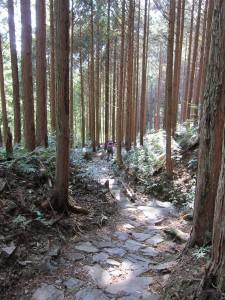 April 1 arrives at what is usually the peak time for cherry blossoms in Japan. Canopies of pink and white blossoms cover parks and brighten up streets, drawing crowds of people to marvel at their beauty, reflect on the fleeting nature of life that the short-lived blossoms have traditionally represented in Japanese culture, or engage in Epicurean hanami (“flower viewing”) gatherings. Television news carries daily updates on the progress of the “cherry blossom front” as it moves north up the Japanese archipelago.
April 1 arrives at what is usually the peak time for cherry blossoms in Japan. Canopies of pink and white blossoms cover parks and brighten up streets, drawing crowds of people to marvel at their beauty, reflect on the fleeting nature of life that the short-lived blossoms have traditionally represented in Japanese culture, or engage in Epicurean hanami (“flower viewing”) gatherings. Television news carries daily updates on the progress of the “cherry blossom front” as it moves north up the Japanese archipelago.
The spring flowering of another beautiful tree in Japan also starts to gain media attention around this time of the year, though for a very different reason. Japanese cedar trees (Cryptomeria, known as sugi in Japanese; actually a separate species not related to other cedars), which are ubiquitous in the hills and mountains of Japan, begin to release their pollen, triggering allergies among a significant part of the population. A recent article in The Economist about this phenomena noted that approximately 20 million people in Japan each year suffer allergic reactions to the pollen.
Japan’s cedar pollen front is a cautionary tale of unsustainable silviculture. Large plantations of cedars were planted all across the country after World War II, primarily to cultivate the tree for use in building and construction materials. However, as imported lumber became cheaper than Japanese trees for this purpose, demand for the cedars dropped. More often than not they were allowed to continue growing, subsidized, and producing ever more pollen (and allergies) every year. The decline in Japan’s forestry sector, the increasing average age of Japanese foresters, the accelerating depopulation of small mountain towns and villages once dependent on forestry, and multiple levels of government involved combine to make finding solutions to this issue increasingly vexing (as outlined in the Economist article).
Anyone who has hiked through Japanese forests can not help but have noticed in many places dense stands of maturing yet spindly sugi. Many of these forests would benefit from selective-cut thinning that would enable the healthier trees to continue growing–possibly down the road into some of the awe-inspiring behemoths often found and honored at Shinto shrines. As all parties involved–from the national and local governments to the foresters and landowners, not to mention consumers and users of the wood–work to address this surprisingly challenging issue, an important consideration will be whether Japan’s future forests should be treated primarily as an economic commodity as in the past, or as an environmental asset beneficial to public health (not only for reducing pollen, but also for absorbing greenhouse gases)? The answers, and the most sustainable solutions, will most likely be found through a combination of the two.
Image by Author




